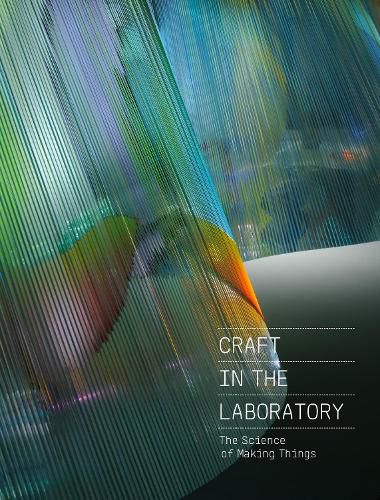Readings Newsletter
Become a Readings Member to make your shopping experience even easier.
Sign in or sign up for free!
You’re not far away from qualifying for FREE standard shipping within Australia
You’ve qualified for FREE standard shipping within Australia
The cart is loading…






This multi-disciplinary volume looks at how artists and craft practitioners approach their creative process by thinking like scientists and engineers, and reveals the many ways art intersects with science. This volume is the first to examine how craft artists and designers apply scientific and mathematical concepts to creating their work, and reveals approaches to problem-solving among these makers and professionals in STEM fields (science, technology, engineering and mathematics). The acronym STEM reflects educators’ recognition that these fields are central to understanding how the 21st-century world functions, but those with training in the arts argue instead for the acronym STEAM, emphasizing how art intersects with the four other fields. Craft in the Laboratory builds off STEAM-related programming created by the Mint Museum of Art’s department of Learning & Engagement to explore this intersection in depth. Drawn from the Museum’s renowned permanent collection of craft and design in all media - ceramic, pottery, wood, metal, glass, fibre, textiles and design - this volume highlights how artists have thought like scientists and engineers. For example, Kate Malone’s knowledge of the chemistry of clay bodies and glazes allows her to produce sculptures such as Heart Walnut. Douglas Harling made Vishnu Dreams using the ancient technique of granulation, aided by his understanding of the roles of surface tension, oxygen reduction, and eutectic bonds in fusing gold granules to a surface. Zoltan Bohus carefully planned the layers of glass in Stratofera on paper before creating it, using his knowledge of geometry and the prismatic qualities of glass. Technical aspects of materials and processes are discussed. AUTHOR: Rebecca Elliot is assistant curator of Craft, Design & Fashion, Mint Musem of Art. 68 colour illustrations
$9.00 standard shipping within Australia
FREE standard shipping within Australia for orders over $100.00
Express & International shipping calculated at checkout
This multi-disciplinary volume looks at how artists and craft practitioners approach their creative process by thinking like scientists and engineers, and reveals the many ways art intersects with science. This volume is the first to examine how craft artists and designers apply scientific and mathematical concepts to creating their work, and reveals approaches to problem-solving among these makers and professionals in STEM fields (science, technology, engineering and mathematics). The acronym STEM reflects educators’ recognition that these fields are central to understanding how the 21st-century world functions, but those with training in the arts argue instead for the acronym STEAM, emphasizing how art intersects with the four other fields. Craft in the Laboratory builds off STEAM-related programming created by the Mint Museum of Art’s department of Learning & Engagement to explore this intersection in depth. Drawn from the Museum’s renowned permanent collection of craft and design in all media - ceramic, pottery, wood, metal, glass, fibre, textiles and design - this volume highlights how artists have thought like scientists and engineers. For example, Kate Malone’s knowledge of the chemistry of clay bodies and glazes allows her to produce sculptures such as Heart Walnut. Douglas Harling made Vishnu Dreams using the ancient technique of granulation, aided by his understanding of the roles of surface tension, oxygen reduction, and eutectic bonds in fusing gold granules to a surface. Zoltan Bohus carefully planned the layers of glass in Stratofera on paper before creating it, using his knowledge of geometry and the prismatic qualities of glass. Technical aspects of materials and processes are discussed. AUTHOR: Rebecca Elliot is assistant curator of Craft, Design & Fashion, Mint Musem of Art. 68 colour illustrations